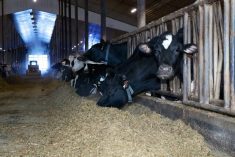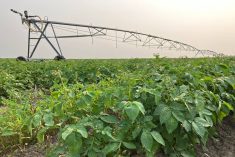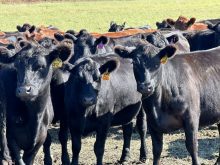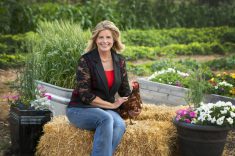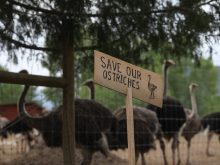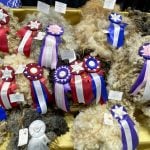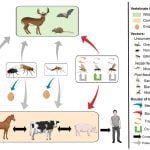Kent Lamoureux is a popular guy with Canadian Forest Service officials, who hope he’ll inspire other farmers to follow in his footsteps.
The Gibbons-area landowner is partnering with the federal agency to turn his 140 acres of farmland located along Highway 37, a short drive north of Edmonton, into a hybrid poplar and willow plantation site.
“We see it as a billboard for growing short-rotation woody crops,” said Tim Keddy, a wood fibre development specialist with CFS.
“Being right on the highway, it has good visible tech transfer opportunities for us to demonstrate to people what is happening on the site and what support we can provide. We don’t get a lot of people who want to turn their farmland into trees.”
Read Also

Milk concentration plant officially opens in Alta.
Canadian raw-milk processing history made with start up of Dairy Innovation West milk concentration plant in Alberta
Aesthetics and establishing a more biodiverse environment both played a role in Lamoureux’s decision, but he also plans to eventually harvest the short-rotation woody crop for potential use in manufacturing pulp and paper, solid wood products, and firewood.
“Bush yields eight times less than afforestation, so we’ve really got to think of this as a crop,” said Lamoureux.
He also plans to begin developing a permanent, serviced campground on the property in 2012 aimed at providing a housing option for workers from the nearby Alberta Industrial Heartland area. As well, CFS will use the property as a research and demonstration site.
Lamoureux said he has benefited significantly from his partnership with CFS.
“I’ve learned so much about growing trees,” he said. “Growing a stand of poplar sounds nice in principle, but the spraying and maintenance can be a lot of work. You want to minimize what you are doing and maximize the impact of every pass to try to keep things clean.”
Keddy has been an invaluable source of advice, he said.
“Right from the start, he had a very strong plan in his head of how to get that stand up, growing and accomplished, and that’s what we implemented,” said Lamoureux.
Beats wheat/canola
An agronomist, Lamoureux said he opted for a plantation after conducting extensive research and determining farming only 140 acres of land in a traditional wheat/canola rotation wasn’t profitable. The soil classification on the site is variable, with 10 per cent class one soil, 50 per cent class two, and 40 per cent class three.
Lamoureux started by planting 80 acres in 2005 as part of the federal government’s short-lived Forest 20/20 program, which was aimed at planting trees to try to sequester carbon as part of Canada’s Kyoto Accord commitments. All told, CFS planted nearly 4,500 acres across the prairies as part of this program.
The remaining 60 acres on the Lamoureux property were planted in 2009 as part of an Alberta Community Development Program initiative administered by the Alberta Forest Research Institute (AFRI), which is now part of Alberta Innovates.
“Under the AFRI program, we were looking for landowners to buy into the use of their land as part of a network of sites to demonstrate what impact afforestation could have on community development by using biomass for a variety of applications, such as treatment of sludge, creating community heat, and so on,” said Keddy.
The site consists of four hybrid poplar species and four plantation designs. There is the original Forest 20/20 plantation, which will likely be harvested around 2025; a high-yield afforestation site; a concentrated biomass site; and a hybrid afforestation/biomass plantation.
While CFS provides Lamoureux with management advice on the Forest 20/20 site, he is responsible for its maintenance, which basically amounts to vegetation control. CFS provided the infrastructure, planting, knowledge, management and maintenance on the remaining 60 acres.
“We have research projects out there that include fertility projects linked to soil productivity, carbon exchange research, the impact of carbon dioxide emissions from the site, water usage research, and also biomass volume and growth research,” said Keddy.
———
“Weseeitasabillboardforgrowingshortrotationwoodycrops.”
TIM KEDDY
WOOD FIBRE DEVELOPMENT SPECIALIST


